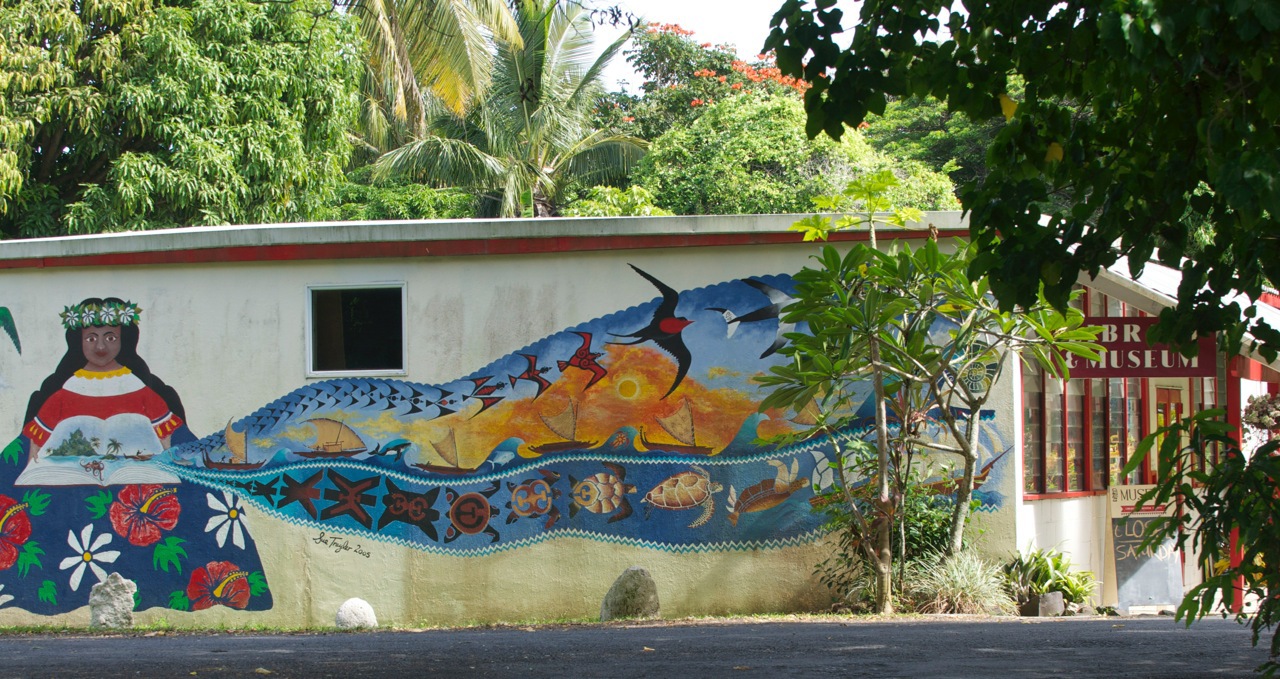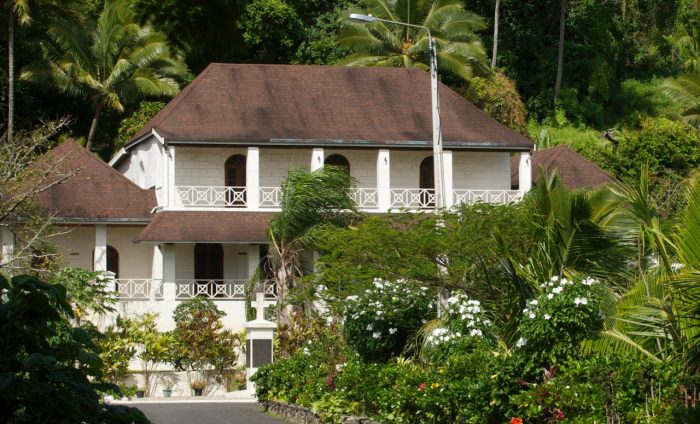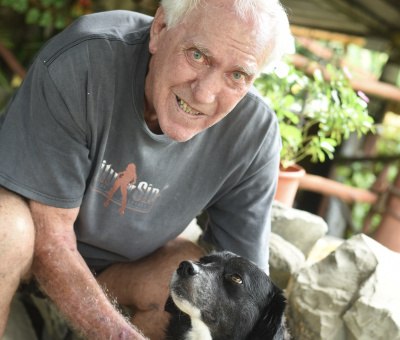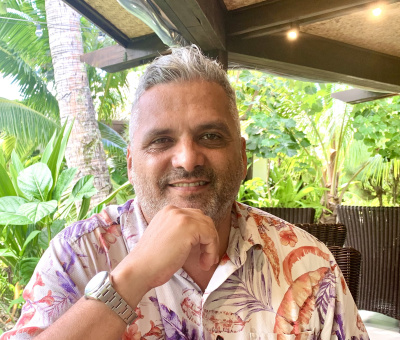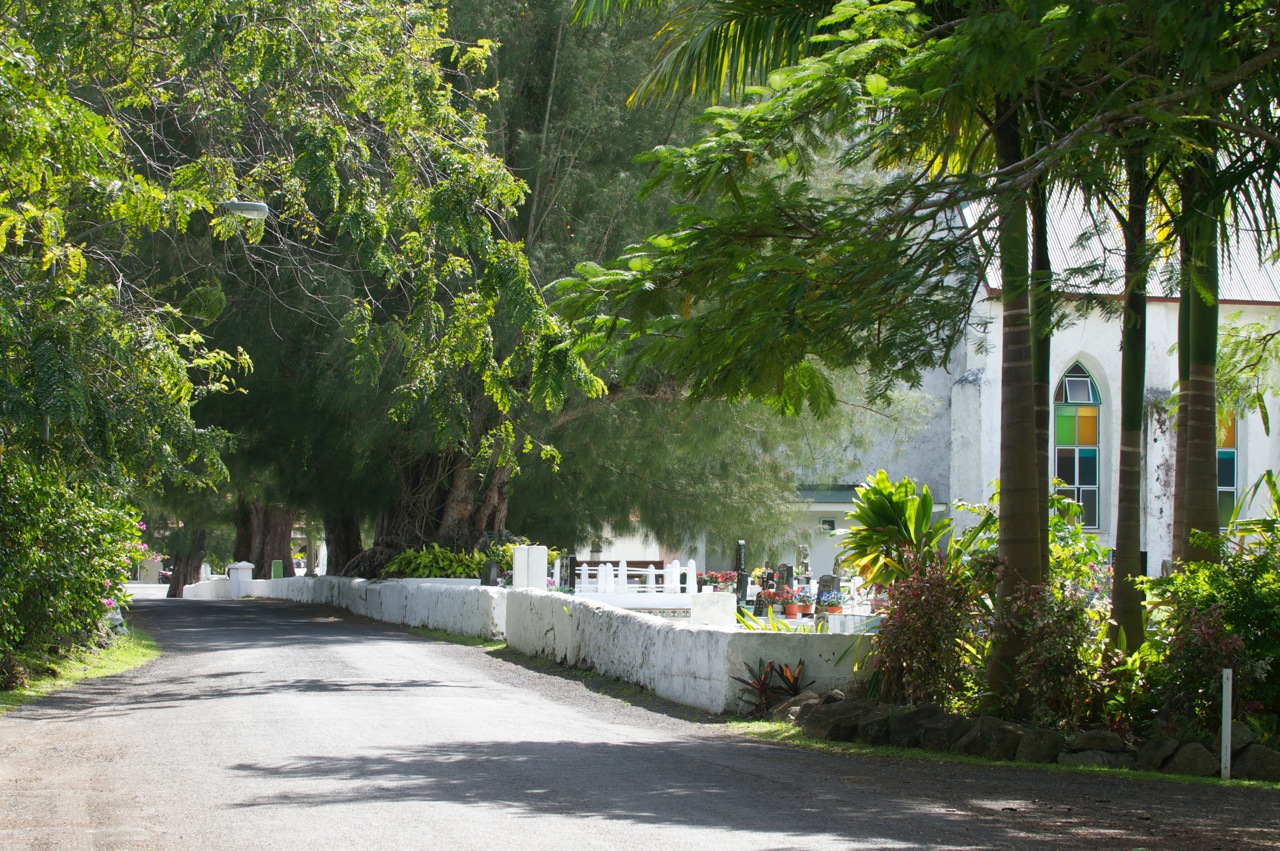 Makea Tinirau Road is a picturesque road built over 150 years ago. In spite of its narrow width especially alongside the Avarua CICC (Cook Islands Christian Church), it is still one of the busiest little streets on Rarotonga. Named after the late ariki (chief) Makea Nui Tinirau Ariki (died 1939), this road is home to some of the oldest and most interesting buildings (and graves) in the country.
Makea Tinirau Road is a picturesque road built over 150 years ago. In spite of its narrow width especially alongside the Avarua CICC (Cook Islands Christian Church), it is still one of the busiest little streets on Rarotonga. Named after the late ariki (chief) Makea Nui Tinirau Ariki (died 1939), this road is home to some of the oldest and most interesting buildings (and graves) in the country.
Just east of Avarua along the main road is an old limestone building formerly known as the Sunday School. It is now a beautifully restored Spanish mission style building known as 'Beachcomber’. It houses boutique shops, an art gallery and The Café. Built in 1845 by the London Missionary Society (LMS) it was used not just as a school for christian instruction but to educate both adults and children in arithmetic and the newly developed Maori alphabet. The building was destroyed by a cyclone in 1942, restored and then destroyed again in a cyclone in 1967 leaving only half the building usable. By the 1980s only the superstructure remained. Interestingly the ruined structure had also been used as a 'prison' in the 1982 movie Merry Christmas, Mr Lawrence starring David Bowie. It was restored again in 1992. Opposite 'Beachcomber' heading inland is Makea Tinirau Rd.
You will see on your right the expansive grounds of Taputapuatea, the site of the koutu (royal court) and paepae (residence) of Makea Nui Ariki, the premier chiefly title in the district of Te Au o Tonga (Rarotonga is divided into three districts). In the back centre of the property is the Para o Tane palace, built in the 1840s, which was originally a single-storied structure. The palace was built of limestone (obtained from coral stones burned for days then slaked) and local timbers used for the framing. A cyclone in 1942 seriously damaged the building but it was restored to its former glory in 1992/93 by local people and students of Auckland University Architecture school, under the tutelage of Harry Turbott. On this site many important historical events took place, including the hoisting of the British flag and the subsequent signing of the proclamation in 1888 making the Hervey Islands (now the southern islands of the Cook Islands) a British protectorate. It is also the site of the signing of the New Zealand annexation document by the then New Zealand Governor-General, Lord Ranfurly, on 11 June 1901.
Through that century official celebrations have taken place at the palace to mark the visits of such dignitaries as a New Zealand parliamentary delegation comprising over 30 members of parliament in 1903, New Zealand Prime Ministers Richard Seddon in 1900, William Massey in 1923 and Sir Keith Holyoake in 1965, Princess Te Puea Herangi, the daughter of the New Zealand Maori King, in February 1947, governors general Sir Bernard Fergusson in 1965 and Sir Arthur Porritt in 1972, the Duke and Duchess of Kent in 1967 and HRH Prince Phillip along with Lord Mountbatten in February 1971.
On the left down the road is the CICC church of Avarua - a large structure built in 1853 from limestone and timber in the 'wattle and daub ' method imported from Britain, this being the third church in Avarua after the first two, which were flimsier in construction (timber only with limestone mortar) were destroyed by cyclones. In the church graveyard some of the founders of the modern Cook Islands are buried or remembered as well as some of the early European migrants and business people: Rev John Williams (martyred at Eromanga, Vanuatu) in 1839, who introduced Christianity along with Papehia, his student from Raiatea (French Polynesia); the 'mother of Christianity' in the Cook Islands, Tapairu a Makea; Rev JK Hutchin who served for 30 years and died in 1912 on a ship returning to New Zealand; and Sir Albert Henry, and Sir Thomas Davis who were the first and second Prime Ministers of the Cook Islands respectively. In the back of the churchyard are the graves of Ettie Rout (1877-1936) a controversial pioneer of contraception in France for New Zealand troops during World War I and Charles Wells Banks (1839-1915), an embezzler of the Wells Fargo Bank in the United States, who fled, and was later pursued, to these shores by men from the famous Pinkerton Agency but he could not be lured aboard ship. His tombstone was supplied courtesy of a fund in the United States for the graves of those buried outside of the USA who fought in the American Civil War.
Further on is the University of the South Pacific (USP), which opened on its present site in 1979. Most of the courses offered are conducted in a mixture of correspondence (online) and intensive training (winter and summer schools) in short term courses by visiting lecturers. Many of USP's students are school leavers and public servants who are able to complete their degrees while remaining on Rarotonga without having to attend the main university in Suva, Fiji.
Opposite USP is the first public library and museum in the Cook Islands. Built in 1963 and funded mostly through fundraising on land donated by the then reigning chief, Makea Nui Teremoana Ariki, it was opened in 1964. The quiet parkland and garden is the only park on this part of the island so feel free to drop in anytime and use the park to find quiet time away from the hustle and bustle of the town. The museum is open Mon-Sat 9am-1pm. Tues 4-7pm) while the park is open every day, all day.
At the end of the USP premises the road branches to the left and leads to the individual island hostels which houses the dance teams that come from the outer islands to Rarotonga once a year to celebrate Te Maeva Nui (the country's biggest celebrations to mark self-government in 1965). In the centre, surrounded by the hostels, is the National Auditorium where the dance contests are staged each year in July, culminating on Constitution Day, August 4th, a public holiday.
Makea Tinirau Rd then crosses a small bridge leading to the grounds of the headquarters of the Cook Islands Christian Church (formerly LMS), known as Takamoa, which was completed in 1843. This site of the founding of the modern post-Christian Cook Islands was handy for several reasons - it was near the main port of Avarua and nearby was the settlement of Makea and his followers, from whom the first missionaries bought land to build the LMS headquarters. Here, there is a theological college and the Mission House, which accommodated the chief LMS minister and his family who was also architect of the college, Rev Aaron Buzzacott, who spent much of his life in the Cook Islands. He served here from 1828 to 1857.
In front of these imposing buildings are two monuments testament to the work of LMS missionaries who, after graduating from Takamoa Theological College, travelled to proselytise in the Pacific. It records the names of the eight Cook Islands missionaries (some with their wives and children) who were martyrs to the cause of spreading the Christian faith in the central and northwest pacific.
Makea Tinirau Rd is a narrow road but it is full of beauty and resplendent with history
